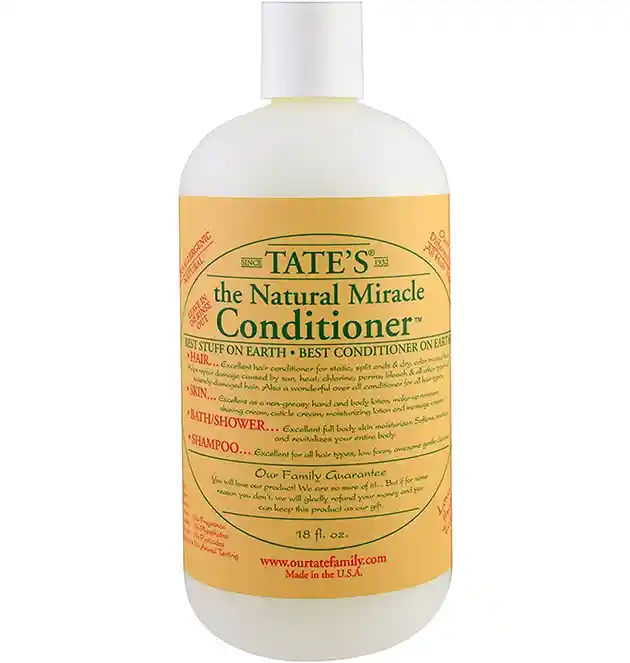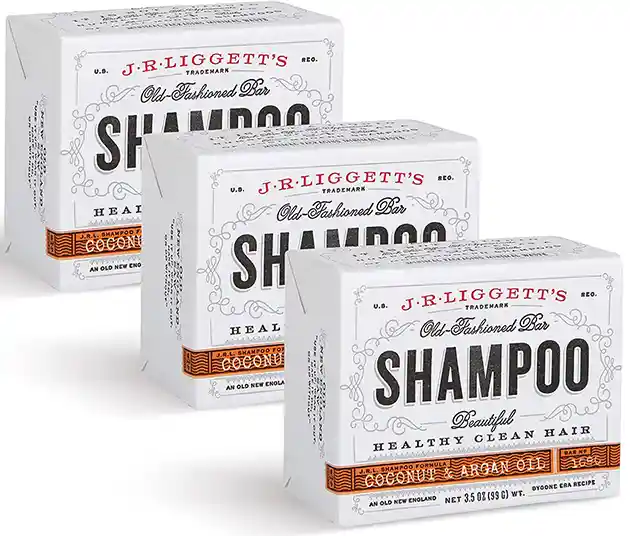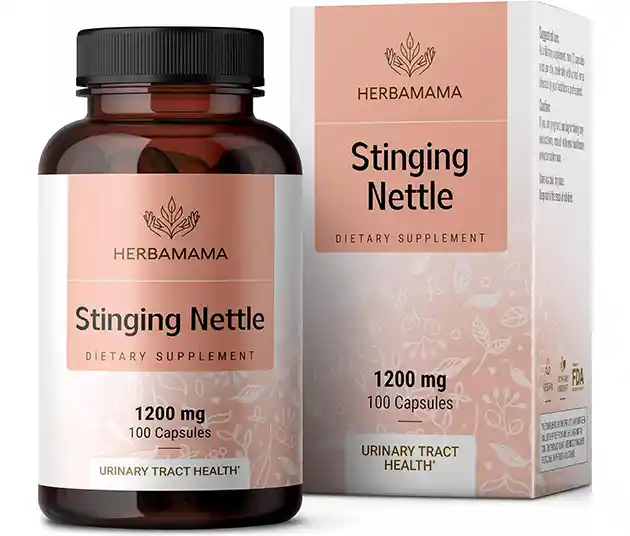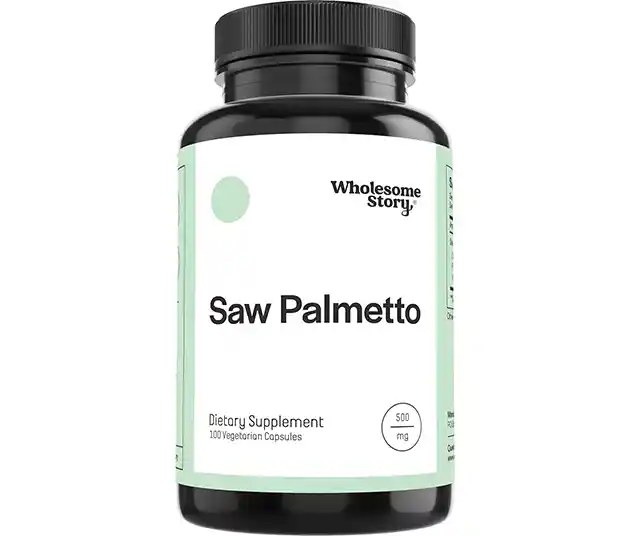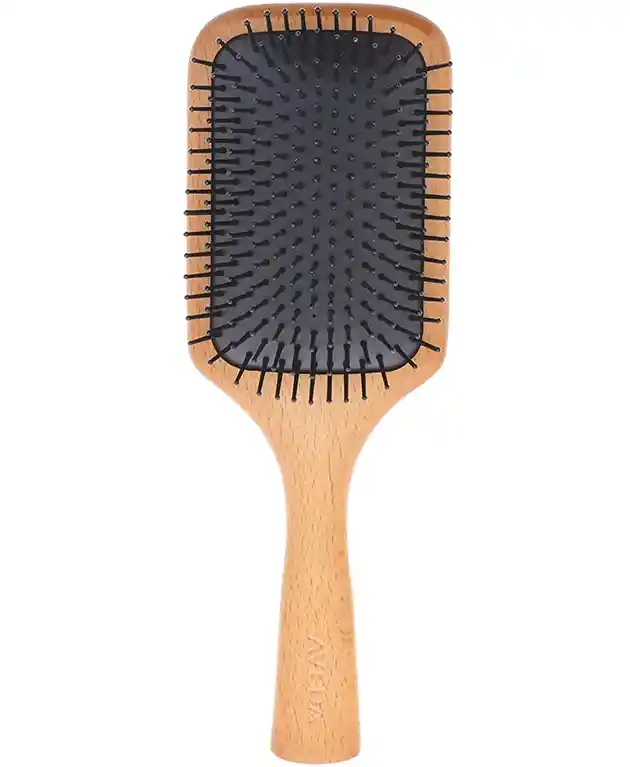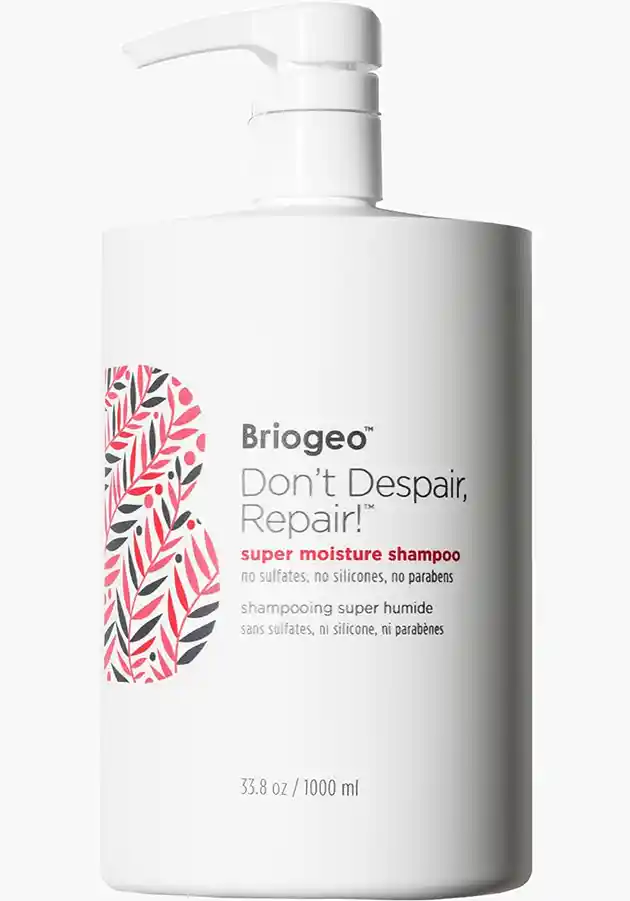Female pattern baldness, also known as androgenetic alopecia, is a common form of hair loss that affects women. While hair loss is more commonly associated with men, female pattern baldness can be just even more devastating, both physically and emotionally. In this article, we discuss the causes, symptoms, and treatments for female pattern baldness, as well as share tips for coping with this condition.
We may earn commissions from links on this page, but we are independent and only feature vegan hair products we truly believe in. Why trust us?
What Causes Female Pattern Baldness?
Female pattern baldness is caused by a combination of genetic and hormonal factors. In most cases, it is inherited from either or both parents. The condition is triggered by an excess of male hormones, known as androgens, which can cause hair follicles to shrink and eventually stop producing hair.
One of the main hormones responsible for female pattern baldness is dihydrotestosterone (DHT), a derivative of the male hormone testosterone. DHT binds to receptors in hair follicles and causes them to shrink, resulting in thinner, shorter, and less visible hair. This process is known as miniaturization.
While genetics and hormones are the primary causes of female pattern baldness, other factors can also contribute to hair loss. These include stress, poor nutrition, medication side effects, and medical conditions such as thyroid problems or polycystic ovary syndrome (PCOS).
Symptoms & Diagnosis
The symptoms of female pattern baldness can vary from person to person, but typically include thinning hair on the crown of the head, a widening part, and a receding hairline. Hair loss may be gradual or sudden, and can occur at any age, though it is most common in women over the age of 50.
Unlike male pattern baldness, which usually results in a complete bald spot, female pattern baldness is characterized by diffuse thinning, meaning the hair thins out all over the head rather than in a specific pattern. Women with this condition may also notice an increase in hair shedding and a decrease in hair volume.
Diagnosing female pattern baldness involves a physical examination and a review of medical history. A doctor will typically examine the scalp and hair, looking for signs of miniaturization and other symptoms of hair loss.
In some cases, blood tests may be ordered to check for underlying medical conditions that could be contributing to hair loss, such as thyroid problems or PCOS. A scalp biopsy may also be performed to analyze hair follicles and determine the cause of hair loss.
Treatments & Medications
There is no cure for female pattern baldness, but certain medications have been found effective treating hair loss. Unfortunately, these treatments are neither cruelty-free nor vegan. And they can contain harsh chemicals. Always check with your doctor, the manufacturer and do some personal research before using any of the following medication.
One of the most common treatments for female pattern baldness is minoxidil, a topical medication that is applied directly to the scalp. Minoxidil works by increasing blood flow to the hair follicles, stimulating hair growth and preventing further hair loss. It is available over-the-counter and in prescription strength.
Another treatment option is finasteride, an oral medication that works by blocking the production of DHT, the hormone responsible for hair loss. Finasteride is only available by prescription and is typically used to treat male pattern baldness, but it can also be effective in women with female pattern baldness.
Other treatment options for female pattern baldness include low-level laser therapy, which uses a special light to stimulate hair growth, and hair transplant surgery, which involves transplanting healthy hair follicles from one part of the scalp to another.
Surgical Procedures
Surgery techniques for female pattern baldness exist. They can seem scary, but they can be effective at hiding baldness if well-executed.
Hair Transplant Surgery
Hair transplant surgery for women is a procedure that involves moving hair follicles from one area of the scalp to another to restore hair growth. The procedure can be effective for women with pattern baldness or hair loss due to injury or scarring. However, it is important to note that hair transplant surgery is not suitable for all women and should be discussed with a qualified medical professional.
Scalp Reduction Surgery
Scalp reduction surgery for women is a procedure that involves removing a portion of the scalp with thinning or balding hair and stretching the remaining scalp to cover the area. This surgery is typically reserved for women with extensive hair loss who are not good candidates for hair transplant surgery. The procedure can be effective in restoring a more natural hairline, but it does involve some scarring and should only be performed by a qualified medical professional.
Vegan Tips for Managing Female Pattern Baldness
If for any reason you do not wish to use the above-listed solutions, there are safe and natural way to minimize hair loss. While these vegan-friendly strategies may help to manage female pattern baldness, they are not a cure. If you are experiencing significant hair loss, speak with your doctor to determine the underlying cause and explore all treatment options.
Eat a Balanced, Nutrient-Rich Diet
Eating a diet rich in plant-based foods, such as fruits, vegetables, legumes, and whole grains, can provide your body with the nutrients it needs to promote healthy hair growth. Specifically, make sure you are getting enough protein, iron, and vitamins B12 and D. If you are not getting enough of these essential nutrients from your diet alone, you may consider taking a supplement. Vegan-friendly options include iron supplements, vitamin B12 supplements, and vitamin D supplements.
Chewable Vegan Vitamin D3
Garden of Life
- Vitamin D from lichen
- USDA certified organic
- Non-GMO verified
- Vegan
- 30 gummies
💬 What Customers Say About This Vitamin D Supplement
👍 Pros:
- Effective Results: Many users report significant improvements in their vitamin D levels and overall health.
- Good Taste: The majority of users find the taste of the chewable tablets pleasant.
- Vegan and Organic: The product is appreciated for being vegan and organic, catering to specific dietary preferences.
- Helps with Seasonal Affective Disorder: Some users note an improvement in mood, particularly in combating S.A.D.
- Quality Brand: The brand is recognized and trusted by users for consistently delivering quality supplements.
- Positive Impact on Health: Users report feeling better and noticing health benefits after taking these supplements.
- Convenient Form: The chewable form is convenient for those who have difficulty swallowing pills.
👎 Cons:
- Unpleasant Taste for Some: A few users dislike the taste, finding it unpalatable or not as expected.
- Large and Chalky Tablets: Some users find the tablets to be too large and chalky, making them difficult to consume.
- Misleading Expectation of Flavor: The raspberry lemon flavor didn’t meet the expectations of some users.
- Negative Experience for Chemotherapy Patients: At least one user undergoing chemotherapy found the taste particularly disagreeable.
- Small Quantity in Bottle: A user pointed out that the bottle contains only 30 tablets, which may not be sufficient for long-term use.
Apple Cider Vinegar Vegan Gummies
Goli
- Contains vitamin B12 and vitamin B9
- Non-GMO
- Vegan
- 60 gummies
💬 What Customers Say About This Vitamin B12 Supplement
👍 Pros:
- Effective Health Benefits: Many users report significant health improvements, such as better gut health, increased energy, and enhanced mood.
- Tasty Flavor: The gummies are generally appreciated for their delicious taste, making them easy to consume.
- Good Texture: The texture of the gummies is liked by many users, aiding in ease of ingestion.
- Convenient Form: Users find the gummy form more convenient and preferable over traditional apple cider vinegar shots.
- Vegan and Gluten-Free: The product is vegan and gluten-free, catering to a wide range of dietary needs.
- Excellent Customer Service: The company’s customer service is highly praised for its responsiveness and helpfulness.
- Positive Impact on Skin and Digestion: Some users notice improvements in skin conditions and digestion.
👎 Cons:
- Sticky Consistency: Some customers find the gummies too sticky, causing difficulty in dispensing single gummies.
- Potential Allergic Reactions: A few users experienced allergic reactions like hives, highlighting the importance of checking ingredients for allergens.
- Effectiveness Varied: Some users did not notice significant health improvements or weight loss.
- Issues with Packaging: There were reports of gummies sticking together or the packaging being difficult to handle, though this seems to be addressed in newer packaging.
- High Cost: Some users feel the product is expensive for the quantity and ingredients provided.
- Vinegar Taste: A few users noted a strong vinegar taste, which might not be pleasant for everyone.
Use Natural Hair Care Products
Many conventional hair care products contain harsh chemicals that can damage the hair and contribute to hair loss. Look for natural, vegan-friendly hair care products that are gentle on your hair and scalp.
Also, avoid harsh styling practices: tight braids, weaves, or chemical treatments can cause damage to the hair follicles and lead to hair loss. Go for more gentle styling practices that don’t put unnecessary stress on the hair.
The Natural Miracle Conditioner
Tate's
- Contains mountain spring water, apples, strawberries, rose, oranges, clove, ginger, pineapple, cranberries, blueberries, geranium, raspberries, blackberries, celery, boysenberries, orchid, coconut, papaya, marigold, hazelnut, pine needles, oak bark, chamomile, nutmeg, calendula, jamine, lemons, parsley, thyme, eucalyptus, cherry bark, passion flower and cinnamon
- No dyes, iodine, glycols, glycerins, sulfates, parabens, fragrance, phosphates or pesticides
- Vegan, cruelty-free
- 18 fl oz / 510 mL
💬 What Customers Say About This Conditioner
👍 Pros:
- Multipurpose Use: Many users appreciate the versatility of the product, using it as a makeup remover, moisturizer, leave-in conditioner, leather cleaner, pet product, and even for removing pine pitch from skin.
- Effective and Gentle: The product is praised for being effective in melting away makeup without causing eye irritation and being suitable for sensitive or irritated skin.
- Quick Absorption and No Scent: It’s well-liked for its quick absorption and lack of scent, making it ideal for those with sensitive skin or who don’t want a lingering fragrance.
- Works on Various Skin Conditions: Customers have found it helpful for dealing with extreme cold, skin rashes, and inflammation.
- Good for Hair Care: The product is recommended for hair care, helping to soften hair and making it more manageable.
👎 Cons:
- Missing Pump in Packaging: Some customers reported that the product did not arrive with a pump as shown in the product description, which affected ease of use.
- Strong Smell for Some: A few users found the smell of the product to be strong, which may not be preferable for everyone.
- Limited Information on Ingredients: There are concerns about the lack of detailed ingredient information, which might be important for users with allergies or skin sensitivities.
- Inconsistency in Packaging: There have been issues with inconsistent packaging, particularly in terms of the inclusion of a pump lid.
- Cost Concerns: A few customers have mentioned that the product is somewhat expensive, which might be a consideration for some.
All-Natural Shampoo Bar, Virgin Coconut and Argan Oil
J·R·LIGGETT'S
- All-natural formula, combining argan, tea tree, olive, coconut, castor and hemp oil
- Promotes a radiant, healthy shine that’s never greasy
- GMO free
- Vegan, cruelty-free
- 3.5 oz / 99 g
💬 What Customers Say About This Shampoo
👍 Pros:
- Effective Cleaning: Users have praised these shampoo bars for their ability to clean hair effectively without leaving residue. They don’t strip the hair of natural oils, preventing frizzy static electricity issues.
- Eco-Friendly Packaging: The absence of plastic bottles is a significant plus for environmentally conscious consumers. The use of wooden platforms for storage also extends the bar’s lifespan.
- Natural Ingredients: The bars are appreciated for their 100% natural ingredients, making them vegan and free from animal testing. This aspect is particularly important for users with allergies or sensitivities.
- Versatility: These shampoo bars are not only used for hair but also for other purposes like shaving and body washing, enhancing their value for money.
- Improves Hair Health: Customers have noted improvements in their hair’s health, softness, and shininess. The bars are effective in managing different hair types, including curly hair.
- Pleasant and Subtle Scent: The bars have a mild, natural scent, which is a significant advantage for those who prefer less overpowering fragrances in their hair care products.
👎 Cons:
- Price: Some users find the bars expensive, although they also acknowledge that they last a long time.
- Lather Issues: A few reviews mentioned difficulty in creating a lather, especially in hard water conditions.
- Build-Up Concerns: There have been instances where users experienced build-up or dandruff, which might be attributed to certain ingredients like argan oil.
- Strong Smell for Some Variants: While most users like the subtle scent, a few found it too strong or different from what they expected.
- Trial and Error: Finding the right variant that suits individual hair types can be a trial-and-error process, as some bars may work better than others for different users.
Try Herbal Remedies
Certain herbs, such as saw palmetto and stinging nettle, have been shown to help block the production of DHT, a hormone that contributes to female pattern baldness. You may consider taking a herbal supplement or using a topical product containing these herbs.
Stinging Nettle Capsules
HERBAMAMA
- Organic stinging nettle root (urtica dioica)
- Rich in nutrients such as vitamins, minerals, and essential amino acids
- Vegan
- 100 caps
💬 What Customers Say About This Stinging Nettle Supplement
👍 Pros:
- Noticeable Health Benefits: Many users have experienced significant improvements in their health after using the product. This includes reduced swelling, alleviation of allergy symptoms, and improved urinary health.
- Effectiveness for Allergies: Specifically, there’s a mention of the product being highly effective in alleviating severe allergies, particularly to cats, with rapid relief from symptoms.
- Positive Impact on Digestion and Bloating: Users have noted that the product effectively reduces bloating, especially after meals, contributing to a feeling of lightness and comfort.
- Blood Pressure Management: While one user did report an initial increase in blood pressure, they also noted that reducing the dosage helped manage this issue.
- No Caffeine or Adverse Side Effects: The absence of caffeine and other stimulants in the product is appreciated, as it minimizes the likelihood of side effects.
👎 Cons:
- Inconsistent Results: A few users did not experience the desired health benefits, suggesting that the product’s effectiveness may vary among individuals.
- Potential Interaction with Medications: One user experienced an increase in blood pressure, indicating a possible interaction with prescription medications. This underscores the importance of consulting with a healthcare provider before starting any new supplement, especially for individuals on medication.
- Uncertainty in Effectiveness: A user mentioned being unsure of the product’s effectiveness, even after taking it for an extended period. This highlights the subjective nature of dietary supplements and their varying impact on different individuals.
Saw Palmetto Supplement Extract
Wholesome Story
- Organic saw palmetto powder (500 mg per cap)
- Certified by the Clean Label Project
- GMO free
- Vegan, cruelty-free
- 100 caps
💬 What Customers Say About This Saw Palmetto Supplement
👍 Pros:
- Effective for PCOS: Users have reported significant benefits in managing PCOS symptoms. This includes regularizing menstrual cycles and even achieving pregnancy after long periods of difficulty due to PCOS.
- Positive Impact on Hair Health: Many users have noticed improvements in hair health, including reduced hair loss and enhanced hair growth. The product is praised for making hair more healthy, shiny, and fast-growing.
- Acne Improvement: For individuals experiencing acne, particularly after stopping birth control, this product has been effective in reducing breakouts significantly.
- General Wellness: Some users have reported feeling better overall after taking the supplement, suggesting a positive impact on general health.
- Easy to Swallow: The product is user-friendly, being easy to swallow, which is an important consideration for daily supplements.
👎 Cons:
- Uncertainty About Effectiveness: A few users are uncertain about the product’s effectiveness, especially in terms of hair growth. They plan to continue usage for a longer period before forming a final opinion.
- Insufficient Time for Evaluation: Some users have mentioned that they have only used the product for a short time, such as six weeks, and are waiting to complete a 90-day period to fully assess its effectiveness.
Massage Your Scalp
Massaging your scalp can help to improve blood flow to the hair follicles and stimulate hair growth. You can do this with your fingers, a vegan brush or a scalp massager.
Wooden Large Paddle Brush
Aveda
- Features extended bristles that stimulate and massage the scalp
- Perfect bristle feel, wide coverage area and easy to hold
- Vegan
- Plastic bristles / Wood handle
💬 What Customers Say About This Paddle Brush
👍 Pros:
- Gentle on Hair and Scalp: Users have consistently noted that the brush is incredibly gentle, avoiding pain even when dealing with knotted hair.
- Durability and Longevity: Many reviews highlight the brush’s durability, with some users having used it for over a decade without any bristles breaking or missing.
- Lightweight and Comfortable Design: The wooden handle is appreciated for being lightweight and offering a good grip, making it comfortable to use.
- Effective for Various Hair Types: Users with different hair lengths and thicknesses have found the brush effective, indicating its versatility.
- Static-Free and Smooth Combing: The brush is praised for leaving hair smooth and free of knots, and for being static-free.
- Quality Bristles: The bristles’ flexibility and ball-tips are appreciated for their effectiveness and comfort during use.
👎 Cons:
- Price Consideration: Some users feel the brush is a bit pricey, especially when facing issues like losing a bristle after minimal use.
- Potential for Breakage: A user mentioned the need to replace the brush due to a pet chewing it, suggesting it might not be resistant to certain kinds of damage.
Practice Stress Management Techniques
Stress can contribute to hair loss, so finding ways to manage stress levels can be beneficial. This may include practicing relaxation techniques, such as meditation or yoga, or engaging in activities that you enjoy.
Coping Strategies
Coping strategies for dealing with female pattern baldness involve addressing the psychological impact of hair loss, such as seeking emotional support from loved ones, practicing self-care and positive self-talk, exploring therapy or counseling options, and finding ways to redefine one’s self-concept beyond external appearance.
Dealing With Female Pattern Baldness
Dealing with female pattern baldness can be difficult, especially for women who are used to having a full head of hair. However, there are several coping strategies that can help make the condition more manageable.
Women should seek support from loved ones, friends, or support groups. Hair loss can be a sensitive topic, and it can be helpful to have a safe space to talk about the emotional impact of the condition.
Hairstyles & Haircuts
Another way to cope with female pattern baldness is to experiment with different hairstyles and haircuts that can help conceal thinning hair. A skilled hairstylist can help create a flattering look that makes the most of your remaining hair.
Health & Wellness
Finally, it’s important to prioritize self-care and take steps to maintain overall health and wellness. As mentioned before, eating a balanced diet, getting regular exercise, and managing stress may all help reduce the risk of hair loss.
Conclusion
Managing female pattern baldness involves a multifaceted approach that not only focuses on diet and stress reduction but also on the judicious selection of natural hair care products. Herbal remedies and scalp massages offer additional avenues for encouraging hair growth. By adopting such comprehensive measures, there’s potential to mitigate the effects of this condition.
Even if well-documented and carefully written, this content should not be used as a substitute for professional diagnosis and treatment. Consult a qualified health care provider before making any health care decisions about any specific medical condition.





